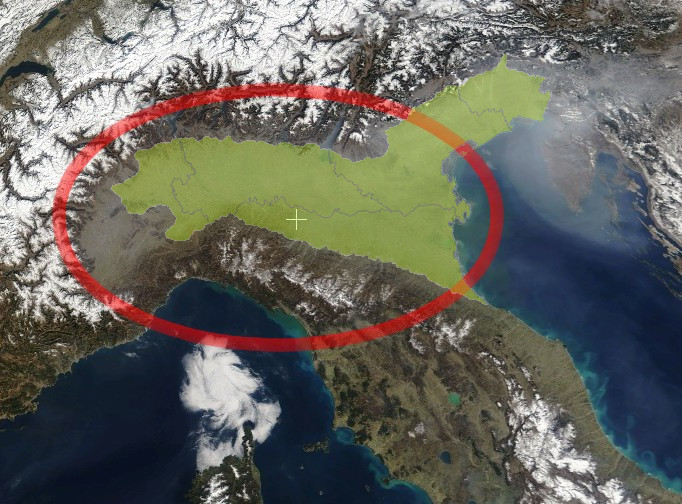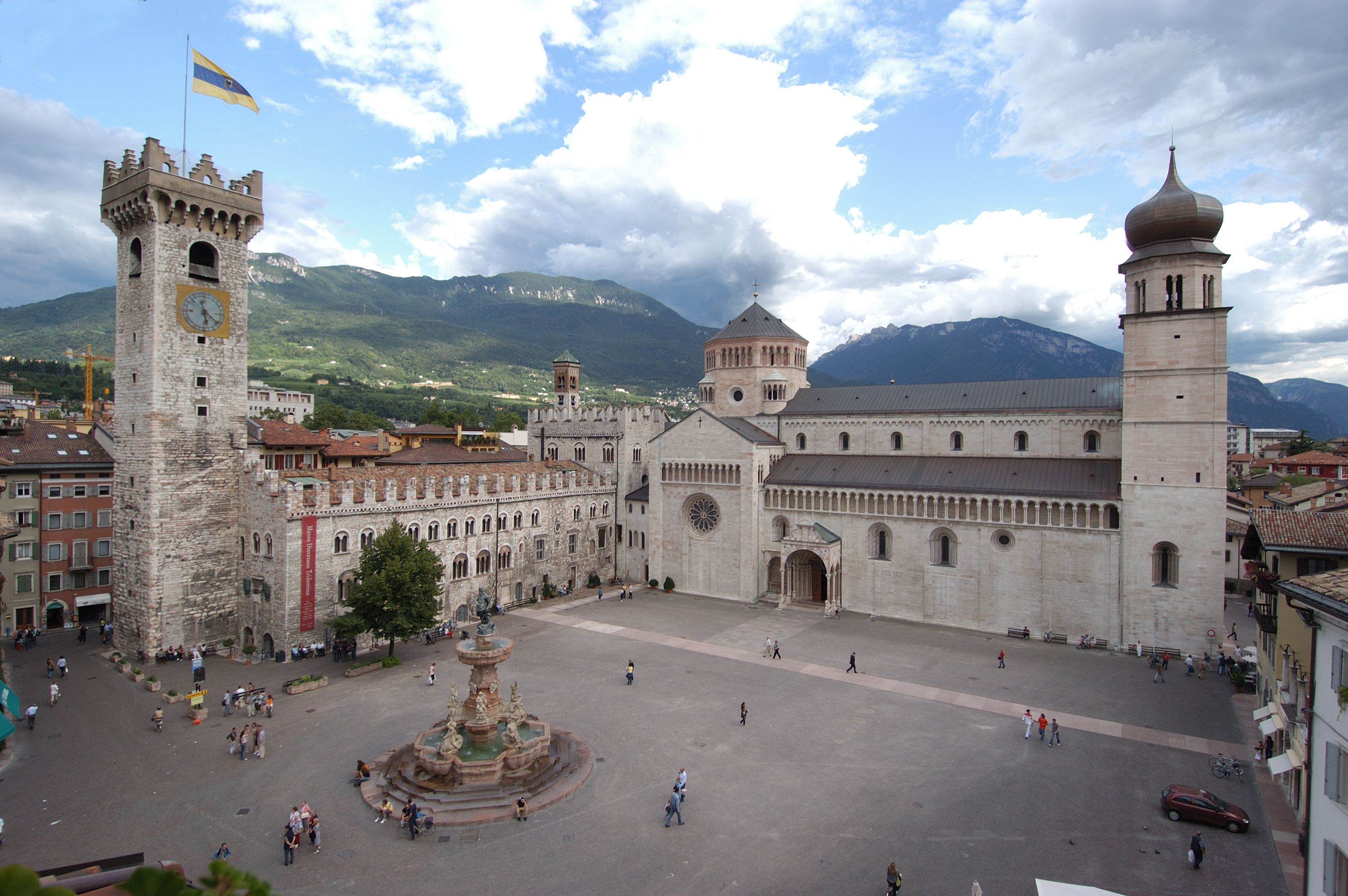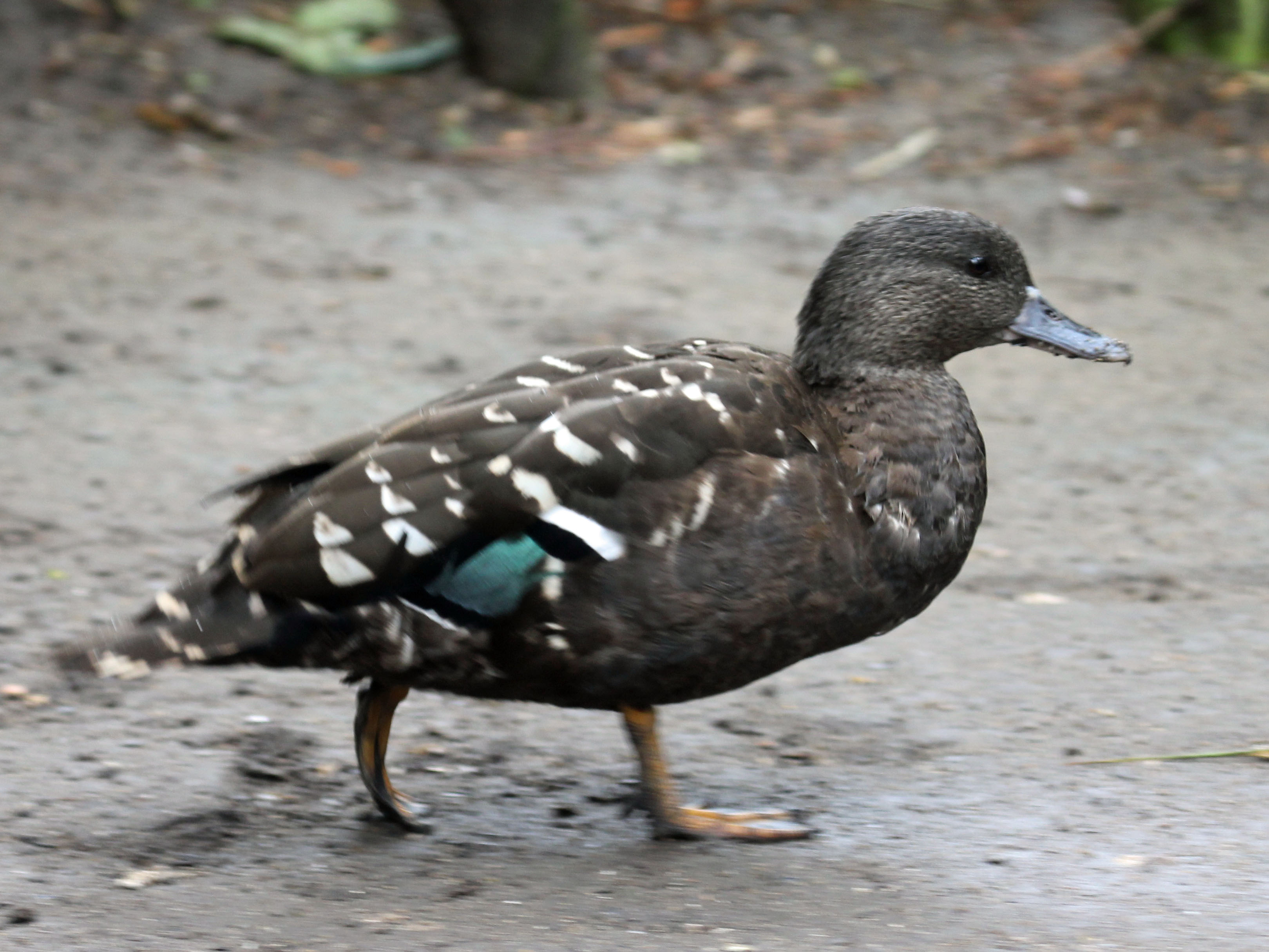|
Autostrada A22 (Italy)
The Autostrada A22 or Autobrennero or Autostrada del Brennero ("Brenner motorway"; ) is one of the most important ''autostrade of Italy, autostrada'' (Italian language, Italian for "motorway") in Italy, as it connects Po Valley, the city of Modena and the Autostrada A1 (Italy), Autostrada A1 to Austria through the Brenner Pass, located in the municipality of Brenner, South Tyrol, Brenner. The Autostrada A22 is long. It is a part of the European route E45, E45 European route. The operator of the road is Autostrada del Brennero (company), Autostrada del Brennero S.p.A. The Autostrada A22 is located in the Regions of Italy, regions of Emilia-Romagna, Lombardy, Veneto and Trentino-Alto Adige/Südtirol. History In 1949, during the Geneva Convention on Road Traffic, it was designed a route, identified as ''E56'', leading from Scandinavia to the southernmost point of Italy. The current Autobrennero track was already part of that route plan. The next step for the fulfillment of the p ... [...More Info...] [...Related Items...] OR: [Wikipedia] [Google] [Baidu] |
Modena
Modena (, ; ; ; ; ) is a city and ''comune'' (municipality) on the south side of the Po Valley, in the Province of Modena, in the Emilia-Romagna region of northern Italy. It has 184,739 inhabitants as of 2025. A town, and seat of an archbishop, it is known for its car industry since the factories of the famous Italian upper-class sports car makers Ferrari, De Tomaso, Lamborghini, Pagani Automobili, Pagani and Maserati are, or were, located there and all, except Lamborghini, (having their factory in Sant'Agata Bolognese), have headquarters in the city or nearby. One of Ferrari's cars, the Ferrari 360, 360 Modena, was named after the town itself. Ferrari's production plant and Formula One team Scuderia Ferrari are based in Maranello south of the city. The University of Modena, founded in 1175 and expanded by Francesco II d'Este in 1686, focuses on economics, medicine and law, and is the second oldest :wikt:athenaeum, athenaeum in Italy. Italian military officers are trained at ... [...More Info...] [...Related Items...] OR: [Wikipedia] [Google] [Baidu] |
Po Valley
The Po Valley, Po Plain, Plain of the Po, or Padan Plain (, , or ) is a major geographical feature of northern Italy. It extends approximately in an east-west direction, with an area of including its Venetian Plain, Venetic extension not actually related to the Po (river), Po basin; it runs from the Western Alps to the Adriatic Sea. The flatlands of Veneto and Friuli are often considered apart since they do not drain into the Po, but they effectively combine into an unbroken plain, making it the largest in Southern Europe. It has a population of 17 million, or a third of Italy's total population. The plain is the surface of an in-filled system of ancient canyons (the "Apennine Foredeep") extending from the Apennine Mountains, Apennines in the south to the Alps in the north, including the northern Adriatic. In addition to the Po and its affluents, the contemporary surface may be considered to include the Savio (river), Savio, Lamone (river), Lamone and Reno (river), Reno to the ... [...More Info...] [...Related Items...] OR: [Wikipedia] [Google] [Baidu] |
Adige
The Adige is the second-longest river in Italy, after the Po. It rises near the Reschen Pass in the Vinschgau in the province of South Tyrol, near the Italian border with Austria and Switzerland, and flows through most of northeastern Italy to the Adriatic Sea. The name of the river is of unknown origin. Nineteenth-century theories, such as a derivation from the Proto-Celtic 'the water', and alleged to be cognate with the River Tees in England (anciently ''Athesis'', ''Teesa''), have never been accepted by Celtic onomasts and are now completely obsolete. Description The river source is near the Reschen Pass () close to the borders with Austria and Switzerland above the Inn Valley. It flows through the artificial alpine Lake Reschen. The lake is known for the church tower that marks the site of the former village of Alt Graun ("Old Graun"); it was evacuated and flooded in 1953 after the dam was finished. Near Glurns, the Rom River joins from the Swiss Val Müstair. T ... [...More Info...] [...Related Items...] OR: [Wikipedia] [Google] [Baidu] |
Brixen
Brixen (; , ; or , ) is a town and communes of Italy, commune in South Tyrol, northern Italy, located about north of Bolzano. Geography Brixen is the third-largest city and oldest town in the province, with a population of nearly twenty-three thousand. It is located at the confluence of the Eisack and Rienz rivers, and today it is the capital of the Eisack district community. The Brenner Pass, on the Italian-Austrian border, is 45 km to the north of Brixen, and Bolzano lies 40 km to the south. To the east lies the Plose mountain massif with three peaks, the closest of which being the Telegraph peak (Monte Telegrafo) (2,486 m), formally known as Fröllspitze. On the western side, there is the Königsangerspitze mountain (Monte Pascolo) (2,439 m) and the Pfeffersberg slope (Monteponente), both of which are located within the Sarntal Alps. Brixen is especially known for its skiing, with a major skiing, ski resortthe Plose ''Frazioni'' Brixen is made up of about 22 small ... [...More Info...] [...Related Items...] OR: [Wikipedia] [Google] [Baidu] |
Klausen, South Tyrol
Klausen (; ; or ) is an urban (municipality) and a village in South Tyrol in northern Italy, located about northeast of the city of Bolzano. It is one of ("The most beautiful villages of Italy"). Geography As of 30 November 2010, it had a population of 5,144 and an area of .All demographics and other statistics: Italian statistical institute Istat. Klausen borders the following municipalities: Feldthurns, Lajen, Sarntal, Vahrn, Villanders and Villnöß. Frazioni The municipality of Klausen contains the ''frazioni'' (subdivisions, mainly villages and hamlets) Gufidaun (Gudon), Latzfons (Lazfons), and Verdings (Verdignes). History Klausen is first mentioned in 1027, in a document issued by emperor Conrad II, as ''Clausa sub Sabiona sita'', meaning chasm below the Säben Abbey. Coat-of-arms The emblem represents an argent dexter key on gules. The emblem was used as a seal from 1448, known from 1397 and granted in 1540 by Cardinal ''Bernhard von Cles'', Bishop of Brixen. ... [...More Info...] [...Related Items...] OR: [Wikipedia] [Google] [Baidu] |
Trento
Trento ( or ; Ladin language, Ladin and ; ; ; ; ; ), also known in English as Trent, is a city on the Adige, Adige River in Trentino-Alto Adige/Südtirol in Italy. It is the capital of the Trentino, autonomous province of Trento. In the 16th century, the city was the location of the Council of Trent. Formerly part of Austrian Empire, Austria and Austria-Hungary, it was annexed by Kingdom of Italy, Italy in 1919. With 118,142 inhabitants, Trento is the third largest city in the Alps and second largest in the historical region of Tyrol. Trento is an educational, scientific, financial and political centre in Trentino-Alto Adige/Südtirol, in Tyrol and Northern Italy in general. The city contains a picturesque Medieval and Renaissance historic centre, with ancient buildings such as Trento Cathedral and the Castello del Buonconsiglio. Together with other Alpine towns Trento engages in the Alpine Town of the Year Association for the implementation of the Alpine Convention to achie ... [...More Info...] [...Related Items...] OR: [Wikipedia] [Google] [Baidu] |
Bolzano
Bolzano ( ; ; or ) is the capital city of South Tyrol (officially the province of Bolzano), Northern Italy. With a population of 108,245, Bolzano is also by far the largest city in South Tyrol and the third largest in historical Tyrol. The greater metro area has about 250,000 inhabitants and is one of the urban centres within the Alps. Bolzano is the seat of the Free University of Bozen-Bolzano, where lectures and seminars are held in English, German, and Italian. The city is also home to the Italian Army's Alpini High Command ( COMALP) and some of its combat and support units. In the 2020 version of the annual ranking of quality of life in Italian cities, Bolzano was ranked jointly first for quality of life alongside Bologna. Along with other Alpine towns in South Tyrol, Bolzano engages in the Alpine Town of the Year Association for the implementation of the Alpine Convention. The Convention aims to promote and achieve sustainable development in the Alpine Arc. Conseque ... [...More Info...] [...Related Items...] OR: [Wikipedia] [Google] [Baidu] |
Lira
Lira is the name of several currency units. It is the current Turkish lira, currency of Turkey and also the local name of the Lebanese pound, currencies of Lebanon and of Syrian pound, Syria. It is also the name of several former currencies, including those of Italy, Malta and Israel. The term originates from the value of a Roman pound (, about 329g, 10.58 troy ounces) of high purity silver. The was the basis of the monetary system of the Roman Empire. When Europe resumed a monetary system, during the Carolingian Empire, the Roman system was adopted. The Roman denominations were used (becoming known in England as £sd). Specifically, this system was kept during the Middle Ages and Modern Age in England, France, and Italy. In each of these countries the was translated into local language: pound (currency), pound in England, in France, in Italy. The Venetian lira was one of the currencies in use in Italy and due to the economic power of the Venetian Republic a popular cur ... [...More Info...] [...Related Items...] OR: [Wikipedia] [Google] [Baidu] |
ANAS
''Anas'' is a genus of dabbling ducks. It includes the pintails, most teals, and the mallard and its close relatives. It formerly included additional species but following the publication of a molecular phylogenetic study in 2009 the genus was split into four separate genera. The genus now contains 31 living species. The name ''Anas'' is the Latin for "duck". Systematics The genus ''Anas'' was introduced by the Swedish naturalist Carl Linnaeus in 1758 in the tenth edition of his ''Systema Naturae''. ''Anas'' is the Latin word for a duck. The genus formerly included additional species. In 2009 a large molecular phylogenetic study was published that compared mitochondrial DNA sequences from ducks, geese and swans in the family Anatidae. The results confirmed some of the conclusions of earlier smaller studies and indicated that the genus as then defined was non-monophyletic. Based on the results of this study, ''Anas'' was split into four proposed monophyletic genera with five sp ... [...More Info...] [...Related Items...] OR: [Wikipedia] [Google] [Baidu] |
Scandinavia
Scandinavia is a subregion#Europe, subregion of northern Europe, with strong historical, cultural, and linguistic ties between its constituent peoples. ''Scandinavia'' most commonly refers to Denmark, Norway, and Sweden. It can sometimes also refer to the Scandinavian Peninsula (which excludes Denmark but includes a part of northern Finland). In English usage, Scandinavia is sometimes used as a synonym for Nordic countries. Iceland and the Faroe Islands are sometimes included in Scandinavia for their Ethnolinguistics, ethnolinguistic relations with Sweden, Norway and Denmark. While Finland differs from other Nordic countries in this respect, some authors call it Scandinavian due to its economic and cultural similarities. The geography of the region is varied, from the Norwegian fjords in the west and Scandinavian mountains covering parts of Norway and Sweden, to the low and flat areas of Denmark in the south, as well as archipelagos and lakes in the east. Most of the population ... [...More Info...] [...Related Items...] OR: [Wikipedia] [Google] [Baidu] |
Geneva Convention On Road Traffic
The Convention on Road Traffic, commonly known as the Geneva Convention on Road Traffic, is an international treaty promoting the development and safety of international road traffic by establishing certain uniform rules among the contracting parties. The convention addresses minimum mechanical and safety equipment needed to be on board and defines an ''identification mark'' to identify the origin of the vehicle. The Convention was prepared and opened for signature by the United Nations Conference on Road and Motor Transport held at Geneva from 23 August to 19 September 1949. It came into force on 26 March 1952. This conference also produced the Protocol on Road Signs and Signals. There is a European Agreement supplementing the 1949 Convention on Road Traffic, in addition to the 1949 Protocol on Road Signs and Signals, concluded in Geneva on 16 September 1950. Contracting parties The Geneva Convention on Road Traffic was concluded in Geneva on 19 September 1949. The convention h ... [...More Info...] [...Related Items...] OR: [Wikipedia] [Google] [Baidu] |






